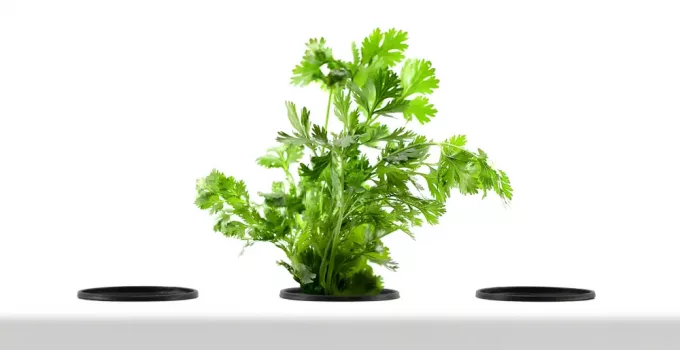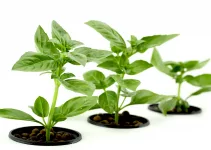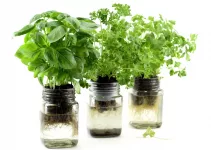When it comes to knowing how to grow cilantro hydroponically, there are a few systems to choose from. As long as you follow a few guidelines, you can grow cilantro in absolutely any hydroponic system. That’s the way for a large majority of hydroponic herbs.
We’ll talk about the best conditions for growing hydroponic cilantro. We’ll also talk about which systems work, especially for beginners.
I should also tell you that, if you’ve already grown hydroponic lettuce or hydroponic basil, you pretty much know almost everything. And you already know which system works best for your skills and your environment, which is awesome.
Table of Contents
How to Grow Cilantro Hydroponically: Indoor Gardens
1. One of the best: AeroGarden Harvest Elite
If you want a small hydroponic system that you can place on any surface in your house, then the AeroGarden Harvest Elite can be quite a good option. There are 6 pods for growing herbs, leafy greens, strawberries or even some flowers. You can experiment with a bunch of different plants. We get a complete system with nutrient solution, good grow lights, grow sponges, and easier to buy options for more of those resources. It also include the seeds for 6 herbs (a mini herb seed kit): Genovese basil, Thai basil, parsley, dill, thyme, and mint. Thus, there are no cilantro seeds, you’ll have to buy those.
2. Affordable: iDoo Hydroponics Growing System 12 Pods
If you are on a budget under $100, the iDoo is amazing. It has good grow lights and 12 pods for growing herbs, leafy greens, strawberries. But we don’t get nutrient solution and we’ll have to buy cilantro seeds.
How to Grow Cilantro Hydroponically: General Guidelines
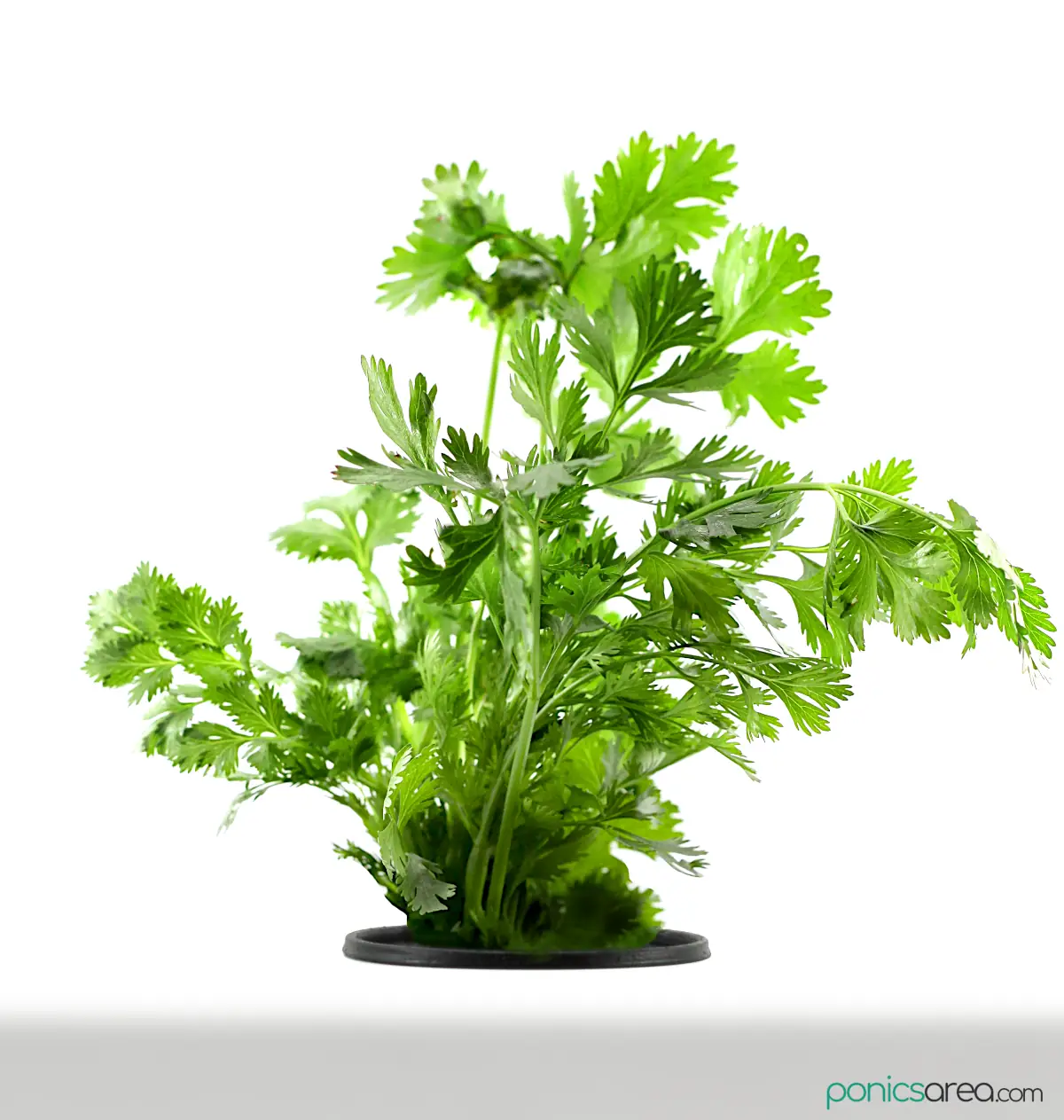
Hydroponic cilantro
Before going into details, I just wanted to let you know just how many names cilantro has: coriander, Chinese parsley, culantro, culantrillo, koyendoro, pak chee, collantro. The botanical name is Coriandrum sativum.
It might have many names but cilantro is incredibly easy to grow hydroponically. Hydroponic parsley is just as easy to grow. These 2 herbs do have a lot in common, besides the fact that they look almost identical.
Why is that?
Because it doesn’t require many if any special conditions, too much care or attention. You will definitely be successful with it. In this regard, it’s very similar to growing chives hydroponically, they can be a good substitute for green onions.
It’s capable of enduring various conditions of pH and light.
Cilantro is also fast-growing, being ready for harvest in about 50 days on average. But you can start harvesting as soon as 6 weeks.
You just need to prune it once it matures, otherwise it requires little maintenance.
Hydroponic cilantro facts
- pH of 6.5 to 6.7 or you can follow the general pH range for hydroponics of 5.5 to 6.5
- EC of 1.6-1.8 (a guide for salt dissolved in water)
- 50 to 70 degrees Fahrenheit temperature (10 to 21 degrees C) but even higher temperatures of 85 degrees F (29.5 degrees C) can work fine, although bolting might happen faster in warmer temperatures – in general, cilantro is considered a cool-season crop although the purpose of hydroponics is to grow plants all year round
- it takes about 7 to 10 days to germinate seeds
- you can harvest in 40-50 days
- grow lights are needed
These cilantro facts apply to any DIY hydroponic system you’re using. But, like I said above, you can basically grow this undemanding herb in any conditions.
If you don’t belong in the camp that thinks that cilantro tastes like soap, I’m sure you’re happy to know that it’s so easy to grow hydroponically.
How to Grow Cilantro Hydroponically: The Systems
Let’s make a short introduction for the many systems that will enable you to grow hydroponic cilantro.
If you’re a complete beginner
- hydroponic indoor gardens systems like the ones from AeroGarden but there are some more affordable options, like the iDoo indoor garden – you can find all the info you need on indoor gardens in my post on the best hydroponic kits for beginners
- if you want the cheapest option for how to grow cilantro hydroponically, you will first focus on the plastic bottles hydroponic wick system
- the Kratky method with mason jars is fantastic if you want to know how to grow cilantro hydroponically without too much effort, it’s easy to execute, not too expensive, and it doesn’t occupy too much space – I wrote a post on the Kratky method with hydroponic jars, that post also contains all the needed info on the plastic bottles hydroponic wick system, since these are two of the easiest for beginners in hydroponics
Systems for more experienced growers
If you have more space at your disposal, a willingness to learn a lot about hydroponics and a bit of technical abilities, then you will attempt one or even more than one of the following hydroponic systems:
- DWC (deep water culture) – one of the easiest to build, a top option for growing lettuce and herbs but it can also be built to support bigger plants
- wicks system – another system that’s great for beginners, wonderful for growing leafy greens and herbs but not bigger plants since they might need more nutrients than the wicks are capable of delivering
- NFT (nutrient film technique) – one of the most popular to make at home, it’s not overly complicated but it does require a water pump
- ebb and flow – a step-up from the NFT because, in addition, it also requires a timer that will activate the water pump to pump up water in the grow bed and the same timer will also shut off the pump so that the excess water and nutrients are returned in the reservoir through a second tube
- drips – one of the most used by commercial growers, quite technical, the drip line is the different component from the ebb and flow, the drip line is used to spray water and nutrients on the plants from above
Aeroponics is not usually a system that many regular household growers try to do by themselves so, I didn’t include it on the list of systems for how to grow cilantro hydroponically.
You can also consider making your own aquaponics system if you want to grow both cilantro and many other greens, herbs, vegetables and fish at the same time.
How to Germinate Cilantro Seeds
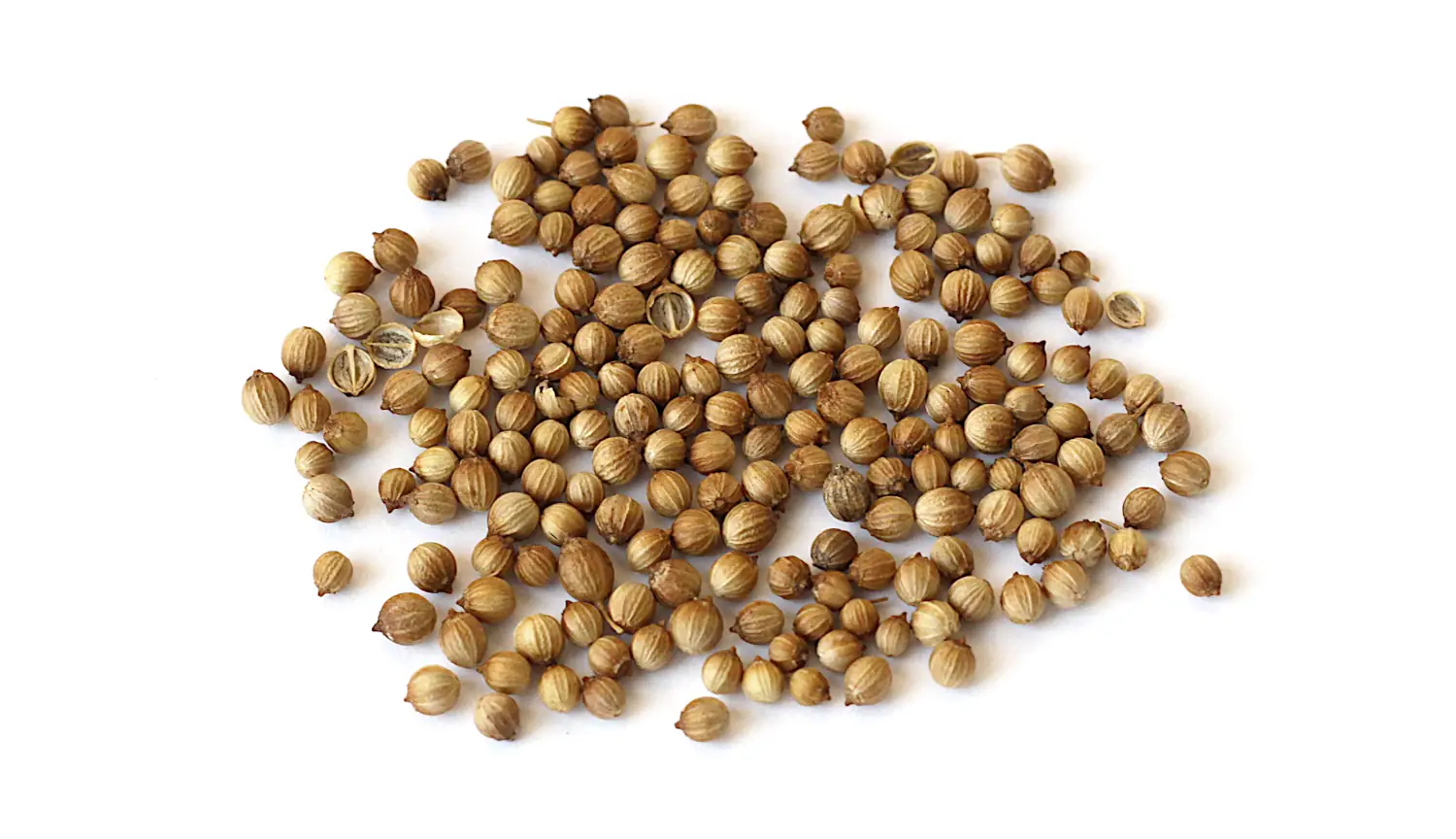
You need to know how to germinate cilantro seeds if you want to know how to grow cilantro hydroponically.
The easiest way is to use rockwool cubes. Or coco coir starter plugs if you want a biodegradable medium.
In a sink, soak up the rockwool cubes and then let the water drain out.
Once they’re drained out, move them onto a plastic tray. Any tray will do, it doesn’t necessarily have to be a seed tray or a growing tray. I even saw someone on YouTube using a plastic cake transporter, with a few holes in the dome of the transporter, which is pretty brilliant.
Put 2-3 cilantro seeds in each cube, in the hole that each cube has. Push them in slightly. If you are unsure of your germination skills, go for 3-4 seeds per cube.
Spray the seeds with just a bit of water, two sprays per cube will be enough.
Pinch the hole closed or cover the seeds with a bit of vermiculite or with a bit of rockwool.
Put a dome on or a second grow tray or any other plastic tray that has a few holes.
You should maintain the rockwool cubes moist by simply adding a bit of water into the plastic tray. You might need to do that once a day or once every 2 days, it depends on the temperature.
The recommended temperature is 65–70°F (18–21°C) and the germination will take 7 to 10 days.
Once the sprouting starts, you can remove the dome.
You can transplant the seedlings into the hydroponic system together with the rockwool cubes.
The alternative is to grow it from cuttings, it always works for herbs and it’s definitely faster since you’re using the stem of a grown plant. You just need to get the stem to grow roots in a glass of water in the sunlight.
The Alternative to Hydroponic Cilantro
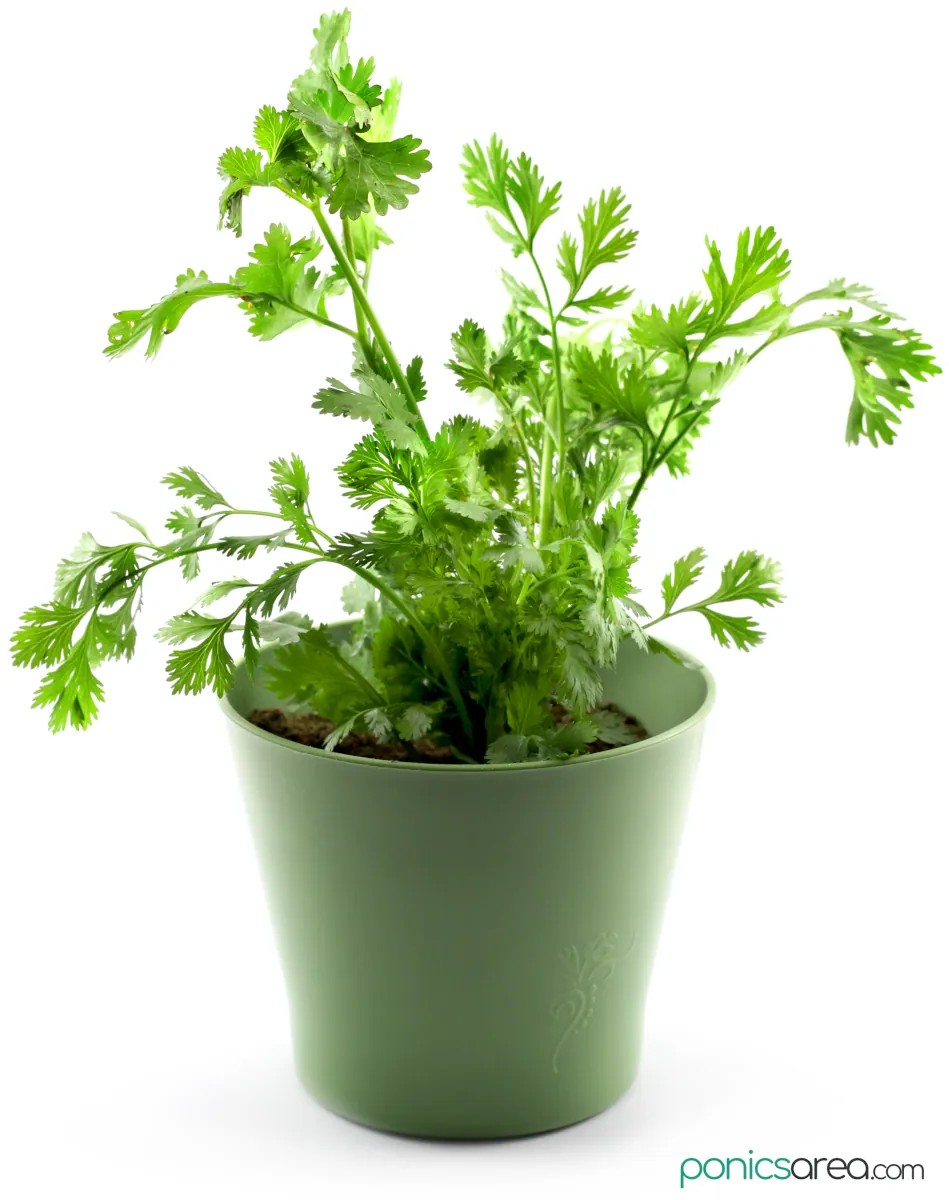
Cilantro herb in a pot
I’m pretty sure that you’ve already guessed that the alternative to how to grow cilantro hydroponically is to grow it in a pot.
You would still be growing it indoors but you would be using potting soil and a pot instead of using any kind of hydroponic system with water and nutrients.
It’s an alternative for those who have changed their mind and think that hydroponics is not the right method for them. Although, hydroponics does offer the clear advantage of plants growing up faster, even 40-50% faster and can produce 30% more yield.
Another unexpected alternative is to grow cilantro microgreens. At least, you won’t have to worry about bolting.
Bolting is the term used for when the plant starts producing seeds. For cilantro it happens especially quickly in hot weather. You will likely make two harvests before it flowers.
Bolting is the biggest complication with growing cilantro, whether you’re interested in knowing how to grow cilantro hydroponically or you end up growing it in pots indoors or outdoors.
How to Grow Cilantro in a Pot Indoors
- you can use pots that have an 8 inch diameter and are 6-8 inches deep– the seeds need about the same density as basil, if you’ve grown potted basil, you pretty much don’t need this guide
- you can even use bigger plastic containers left off from other products
- no matter what type of pot you’re using just remember one thing: the holes for drainage
- airy, light, fast-draining, a bit sandy soil rich in compost is the best for growing potted cilantro indoors – organic potting mix will work, too
- spread out the seeds on top of the soil, around 2 seeds per square inch
- cover up the seeds with 1 inch of potting soil/mix, gently press down the soil to make it even
- you can cover the soil with a sheet of plastic until the seedlings appear
- keep the soil moist until the seeds germinate
- it will grow in cooler shady areas, you can place it in the sun but give it shade during the hot summer days
- if you grow it outdoors, cilantro grows best from spring to fall but, indoors, you can grow it all year round
- you can use nitrogen-rich fertilizer but it’s not mandatory
- once the plant starts to bolt, pinch the top of it to postpone the bolting
- keep the soil moist by watering it regularly but make sure to avoid overwatering – make sure to avoid getting water on the leaves to prevent powdery mildew
And with this we’re pretty much done.
There are so many options for growing cilantro. It’s not a demanding herb, even when it comes to knowing how to grow cilantro hydroponically, any system will do, without needing special treatment.

